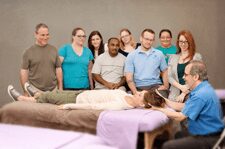 Is massage/bodywork a science?
Is massage/bodywork a science?
Is it a form of non-verbal psychotherapy?
Is it a fine art?
a form of holistic healthcare?
an allopathic medical practice?
a wellness modality?
a liberal art?
a spiritual practice?
Massage and bodywork in the U.S. have been regarded as healthcare practices and, increasingly, beginning in the 1960’s, epitomized at the Esalen Institute, as part of what they called the “non-verbal humanities.”
Over the last 10 years, there has been a blurring of this vision. And now, as some people are contemplating or offering degree programs, the assumption mostly put forward has been that massage would be taught just as an applied science.
I have no problem with such a program. But the institutionalizing of massage as ONLY an applied science would constitute an enormous step backward.
Massage, along with yoga practice and a few other healthcare modalities, is carrying a precious legacy of inclusion and is not limited to just one vision of itself or of what constitutes health. There are many paths we can travel as long as we recognize the freedom and the responsibility to base our progress on both science and art.
So is massage/bodywork –
an applied science?
a form of non-verbal psychotherapy?
a fine art?
a form of holistic healthcare?
an allopathic medical practice?
a wellness modality?
a liberal art?
a spiritual practice?
To any one or to any combination of the above, one can now choose to say “Yes.” Some people prefer one of these visions over others. That is fine! Let’s just, as we move forward, respect and preserve the precious legacy that allows for various pathways.
Many massage students and therapists have consciously chosen the road less travelled. Let’s make sure as we look at exciting extended trainings that we don’t encourage students and clients only onto a one-way highway.
